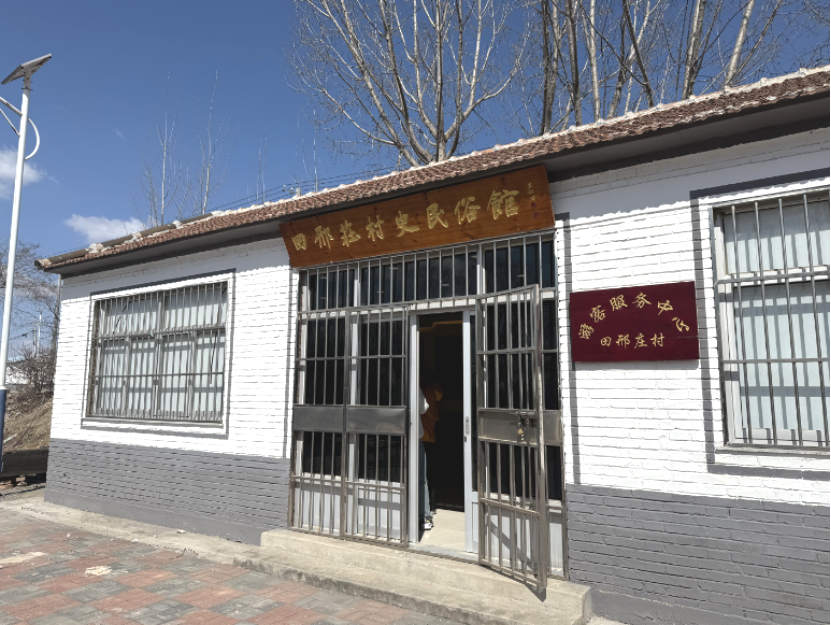Tianxingzhuang Village: Jiangnan Canal Town In The Countryside
What kind of fusion and collision will occur when two regional styles of Jiangnan canal towns and Northern rural areas, which have distinct characteristics and cultural features, are combined?
In Zhouliang Street, Baodi District, Tianjin, there is a characteristic village called Tianxingzhuang Village, known as the "Jiangnan of the North". For many years, Tianxingzhuang Village has been vigorously promoted the development of leading industries such as rice and wheat cultivation, fish and shrimp farming. At the same time, the village has integrated agricultural, cultural and tourism industries to drive economic development, equipped with village history museums, research and popularization bases, vegetable health parks, homestays and other projects.
The person in charge, Zhang Chunan, introduced that "in the past, the old bungalows left by the old school in the village were used as activity venues, with incomplete functions and poor conditions. Villagers were unwilling to go, and it was difficult for organization activities to be carried out regularly. Now we have built a village level activity venue with a total area of 1130 square meters, including a village service hall, a rural library, a leisure and fitness room, a science popularization activity room, a elderly day care center and other fully functional activity rooms."
Ecological countryside, with countless beautiful scenery depicted in paintings. Tianxingzhuang Village has successively built a fitness square of over 1000 square meters, 3 street gardens, and 3 pavilions, and installed 120 solar lights. At the same time, in conjunction with the overall promotion of the improvement of the living environment, Tianxingzhuang Village has successively implemented construction projects such as the entry of tap water pipeline project, sewage pipeline project, and 51 households have completed toilet renovation.
On the wall of each villager's courtyard, there is a small card designed by the village committee with self raised funds. It clearly indicates each family’s motto, honors received, contact information of commonly used service departments and volunteers. Villagers can call for help at any time when they encounter problems and difficulties.
Relying on its ecological and transportation advantages, Tianxingzhuang Village has also cooperated with enterprises to build a science popularization base, jointly developed a smart rural project for primary and secondary school students, and received more than 10000 students, creating conditions for the development of ecological tourism in rural areas.

Arriving at the Tianxingzhuang Village History and Folk Customs Museum, the village's historical origins, development overview, major events in the village, as well as old production tools, clothing, food, housing, transportation and other physical objects are quietly displayed here, reflecting the historical heritage and development changes of the village. At the entrance of the agricultural exhibition stand, there are mysteries behind specialty agricultural products such as "ecological rice" and "corn dumpling flour". It is reported that Tianxingzhuang Village is currently developing green agriculture. While expanding the sales ways of local characteristic agricultural products, it actively introduces the latest developed yellow corn from China northeast area, and promotes the yellow corn products as industrial supplements to the market. This not only meets the dual needs of modern people who value both taste and health, making coarse grains look good and delicious, but also provides another path for the deep processing and extension of the industrial chain of local agricultural products.

In the fields of Tianxingzhuang Village, golden cornfields and paddies are particularly eye-catching. The village and Tianjin Jizhou Institute of Traditional Chinese Medicine and Agriculture jointly tackled key problems and successfully cultivated "golden corn" rich in selenium and "tonic diet rice" with low sugar and high dietary fiber. "Our green agricultural products are sold through on-site ordering and participation in exhibitions. Next, we will further increase the output value of agricultural products through the integration of industry, academia, and research. In addition, our village also has farmers who grow gourds. We plan to cooperate with Intangible Cultural Heritage Projects such as gourd production to increase the added value of agricultural products." Zhang Chunan said.
Walking along the country road, we arrived at an aquaculture area where villagers were busy feeding fish by the pond. "My family has two ponds covering a total area of 80 acres." explained a farmer in the village. "We mainly practice three-dimensional polyculture, raising fish species such as carp, grass carp, silver carp, and shrimp from South America." Additionally, the village has ventured into agroforestry and rice-crab integrated farming, engaging in diversified operations. The village's income has been increasing annually, and the per capita disposable income of villagers has seen a notable rise.
Baodi District has a long history and profound cultural heritage, with various cultural elements such as canal transport culture, rice cultivation culture, etc., which are diverse and integrated, and remain fresh over time. Based on the Chaobai River ecological corridor and its positioning as a "Northern Canal Town", Tianxingzhuang Village plans to expand into health and wellness homestays, rural study tours, and other businesses in the next step. It will also link with surrounding villages and towns to form the "Chaobai River Rural Tourism Belt", with a target annual tourist reception of over 100000, creating the preferred destination for short distance micro vacations in the Beijing-Tianjin-Hebei Region.
(TIANJIN AGRICULTURE AND RURAL COMMITTEE, Writer: Du Min; Translator: Ma Jiangpeng)
 京公网安备 11010802027341号
京公网安备 11010802027341号